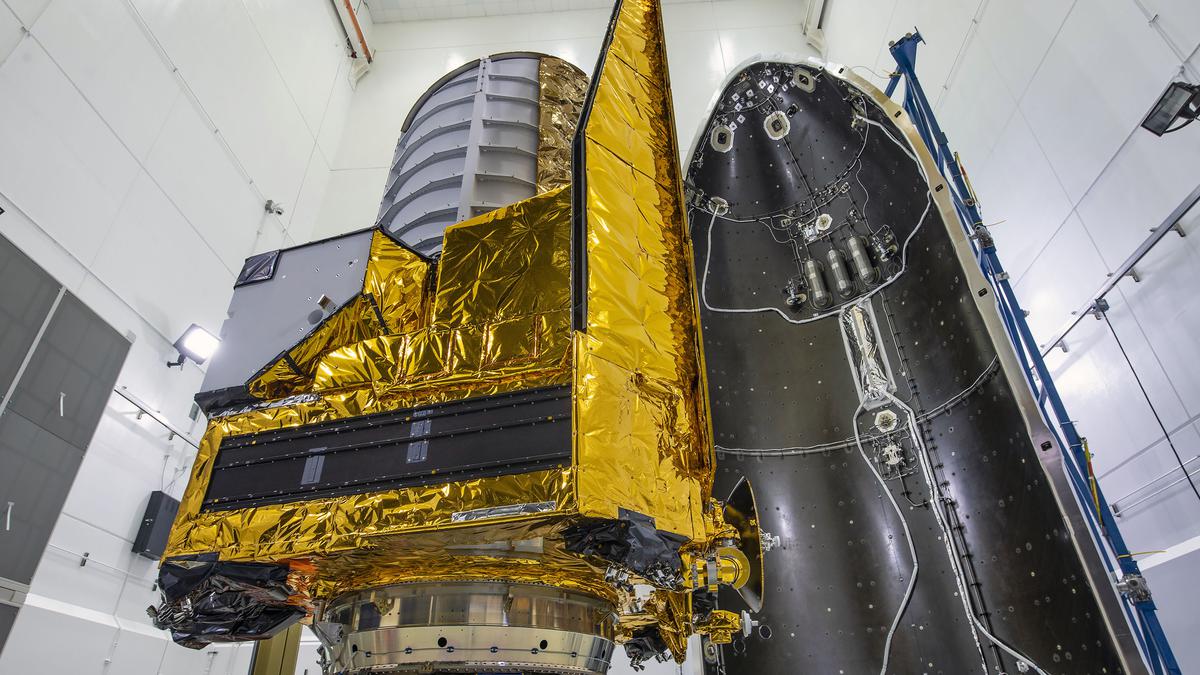
Science This Week | Euclid telescope blasts off to study the ‘dark’ universe, physics helps in understanding hate groups and more Premium
The Hindu
Check out The Hindu’s science wrap featuring top stories on new discoveries, findings, and studies in the scientific world from this week.
This week has been significant for the scientific world with scientists discovering the background hum of the universe caused by gravitational waves, imaging the Milky Way with neutrinos and even capture Saturn’s ring glowing in infrared wavelength. Read more to find top findings and studies from the field of science.
The European Space Agency plans to survey billions of galaxies using the Euclid Space Telescope which launched on July 1 at 11:12 am ET from Cape Canaveral in Florida. The Euclid mission hopes to understand the evolution of the Universe by looking at the light emitted from galaxies 10 billion years ago. The telescope will also focus on gleaning more information on dark energy and dark matter — areas in astrophysics that is still shrouded in near-complete mystery. Floating 1.5 million kilometres above the Earth, the telescope hopes to deliver images that are at least four times sharper than ground-based ones.
Scientists unveiled evidence that gravitational waves, the ripples in the fabric of space-time predicted by Albert Einstein more than a century ago, are permeating the universe at low frequencies - creating a cosmic background hum. The new findings show that space is awash with these gravitational waves, which oscillate over years or longer and appear to originate primarily from pairs of supermassive black holes spiralling together before merging. Objects called pulsars - the extremely dense cores of exploded stars that spin at the speed of kitchen blenders - were crucial in the new research. Sixty-eight pulsars were used in gathering the evidence.
Scientists said on Thursday they have produced an image of the Milky Way not based on electromagnetic radiation - light - but on ghostly subatomic particles called neutrinos. They detected high-energy neutrinos in pristine ice deep below Antarctica's surface, then traced their source back to locations in the Milky Way - the first time these particles have been observed arising from our galaxy. The neutrinos were detected over a span of a decade at the IceCube Neutrino Observatory at a U.S. scientific research station at the South Pole, using more than 5,000 sensors covering an area the size of a small mountain.
Saturn has a fresh new look thanks to NASA’s Webb Space Telescope. The telescope snapped the picture in the infrared last weekend. At this wavelength, the planet appears dark because sunlight is absorbed by methane in the atmosphere. But the icy rings remain bright. Scientists hope to uncover new ring structures as well as any new, faint moons that might be lurking there.
Researchers at the Indian Institute of Science (IISc) are currently undertaking a project which aims to collect data for commonly observed neuro-degenerative disorders and develop models for diagnosis using state-of-the-art machine learning approaches. Scientists from IISc have embarked this project along with Aster CMI hospitals to collect data for neurodegenerative diseases. It envisages using the massive outreach of smartphone technologies among the population as part of the project.
A new study examined the spirals in the leaves and reproductive structures of a fossilised plant dating back 407 million years. Surprisingly, they discovered that all of the spirals observed in this particular species did not follow the rule of Fibonacci sequence. Today, only a very few plants don’t follow a Fibonacci pattern. Spirals occur frequently in nature and can be seen in plant leaves, animal shells and even in the double helix of our DNA. In most cases, these spirals relate to the Fibonacci sequence – a set of numbers where each is the sum of the two numbers that precede it (1, 1, 2, 3, 5, 8, 13, 21 and so on). The discovery of non-Fibonacci spirals in such an early fossil is surprising as they are very rare in living plant species today.





















 Run 3 Space | Play Space Running Game
Run 3 Space | Play Space Running Game Traffic Jam 3D | Online Racing Game
Traffic Jam 3D | Online Racing Game Duck Hunt | Play Old Classic Game
Duck Hunt | Play Old Classic Game











